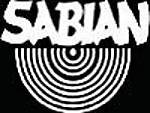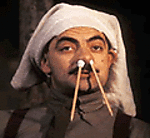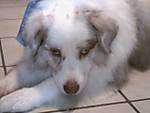The next order of business now that the gun and casemate were installed was to revisit some of the earlier steps and complete some of the missing items. I added the external portion of the gun barrel as originally called for in Step 10 and also installed the Bosch light, fire extinguisher, and triangular front schurzen mounts from Step 8. I added the Bosch light conduit wiring using 0.5mm solder after drilling out the connector end on the light base and a matching hole into the glacis with a #72 finger drill.
I also added the base supports, parts K14, from Step 8 for the spare road wheel box and assembled the box as called for in Step 11 but left the road wheels out for the time being. At some point along the way, perhaps in shipping, one of the support arms for the box got snapped off and lost so I had to rig a replacement. On sprue A there was a very close part in the form of A46 that was the right width so I glued it in place and the cut the length down to match the other arm and allow the box to sit properly. The box was installed to the casemate side with the base of the box glued to the supports using CA gel since the base was PE.

I also applied a little bit of Silver paint to the backs of the driver's periscopes so that once painted the silver will still show in the clear face. The faces themselves will be masked with small amounts of blue tack poster putty prior to paint to preserve their look. I left off all the other tools which will be detailed off the vehicle and installed after painting.

That brought me back to Step 13 which deals with the commander's cupola and the loader's hatches. The opening for the loader's hatch was masked off before installing the hatches themselves to make it easier to work in that space and still protect the work done on the interior. The rear half of the hatch was added first since the front half needed to align properly with the raised MG shield to sit at the correct angle. The instructions for showing the hatches open and the shield raised have an error, the arrow that points to part K40 should really match up with the front half of the hatch and not the MG34 as shown so you have to pay attention to not make a mistake here. K40 is a tiny part that needs to be added to the MG shield and is the small pin that hooks to the front hatch in order to properly support the shield. The shield can't stand up on its own and depends on this support to hold it upright so it's a very important, if small, detail to get right under the circumstances. The small tab on the front of the hatch that connects to this pin has a hole molded open in it but it was too small so I very carefully opened it up with the tip of a brand new #11 blade. Then in a careful bit of choreography, I added the shield and the front hatch together using liquid glue and small adjustments to get them both lined up properly and let it set.
While that was setting up, I constructed the commander's cupola. This is a multi-part assembly also covered in Step 13 and the most important part is the PE inner ring, part MA31. This is a PE strip that has to be curved to provide the backing for the 7 mounted periscopes. The strip itself is very thin PE and flexible but still has some spring to it so I carefully annealed it over a gas flame and after gluing one end to the back of the cupola, used a paint brush handle to gently shape the required circular form. Once shaped, I used small amounts of CA gel to secure it to the supports between each periscope. The periscopes were then added using the clear parts provided. The commander's hatch and the top ring were added last and I opted to close-up the commander's hatch and didn't mount the "rabbit ears" scope due to the fact that the kit part was damaged and missing one of the "ears".
I also noticed that I hadn't caught two rather prominent ejector marks on the back of the mantlet before I installed it so those were carefully filled with putty and sanded down to eliminate them.

All that was left was Step 15 which calls for the mounting of the schurzen rails and the schurzen themselves. I decided some time back that I would do this one as a vehicle in Normandy so wasn't going to fit the plates but the rails were assembled and installed as directed in the instructions. The supports had small mold seams on both the outer and inner surfaces so these were carefully sanded down on the outer surfaces and removed on the inner surfaces with some careful trimming with the #11 blade. I did check to be sure before installing them that it's still possible to add the shovel and gun cleaning rods in their mount points on the sides of the air intakes. The space is tight but workable so that will make it easier to detail them separately and install after painting vs. detailing in place on the vehicle.

Now I can truly say that the next step will be paint...it just won't happen until next weekend!























































